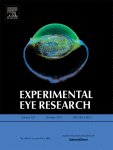|
Autors/es
Molins, B.; Mora, A.; Romero-Vázquez, S.; Pascual-Méndez, A.; Rovira, S.; Figueras-Roca, M.; Balcells M. ; Adán, A.; Martorell, J. ; Adán, A.; Martorell, J.
|
Abstract
The vascular endothelium responds to the shear stress generated by blood flow and changes function to maintain tissue homeostasis and adapt to injury in pathological conditions. Shear stress in the retinal circulation is altered in patients with retinal vascular diseases, such as diabetic retinopathy. Therefore, we aimed to study the effect of laminar shear stress on barrier properties and on the release of proinflammatory cytokines in human retinal microvascular endothelial cells (HRMEC). HRMEC were cultured in Ibidi flow chambers and exposed to laminar shear stress (0–50 dyn/cm2) for 24–48 h. Tight junction distribution (ZO-1 and claudin-5) and cytokine production were determined by immunofluorescence and ELISA, respectively. The chemotactic effect of conditioned media exposed to shear stress was determined by measuring lymphocyte transmigration in Transwells. We found that cells exposed to moderately low shear stress (1.5 and 5 dyn/cm2) showed enhanced distribution of membrane ZO-1 and claudin-5 and decreased production of the proinflammatory cytokines IL-8, CCL2, and IL-6 compared to static conditions and high shear stress values. Moreover, conditioned media from cells exposed to low shear stress, had the lowest chemotactic effect to recruit lymphocytes compared to conditioned media from cells exposed to static and high shear stress conditions. In conclusion, high shear stress and static flow, associated to impaired retinal circulation, may compromise the inner blood retinal barrier phenotype and barrier function in HRMEC.
|

WoS
Scopus
Altmetrics
  
|
